Despite the concept being 400 years old, I find French doors are a great way to add a clean, modern touch to a room. Whether you use them as interior or exterior doors, the amount of light they let through can make a massive difference to a space.
However, after living in an apartment with French doors, I also understand how bad they are from a soundproofing perspective. If you have French doors in your home, you’ll probably agree that the level of noise they let in is a downside.
To combat this, I spent some time researching the best ways to soundproof French doors. This is what I cover in this article, so read on for my top tips.
Considerations for Soundproofing French Doors
Before we jump into the tips, we need to understand 2 concepts: types of noise and types of French doors. By combining this information, you should be able to work out the best solutions for your noise problems.
Types of Sound Traveling Through a French Door
If you’re a regular on my website, you should know this information already. To recap for those of you who are new, here are the basics of sound waves.
Sound consists of pressure waves that travel through a medium. It could be air, water, glass, brick, wood, etc. Sound waves cause molecules to vibrate, and it’s this vibrational energy that transmits (passes on) a sound wave from its source to your ear.
There are 2 general types of sound waves:
Airborne Noise
Airborne noises are ones that travel from the source to your ear through the air. There can be obstacles along this pathway, but we consider sounds to be airborne if they’re transmitted into the air at the start of their journey. Some examples include:
- TV or music speakers
- People talking
- Car horn
- Dog barking
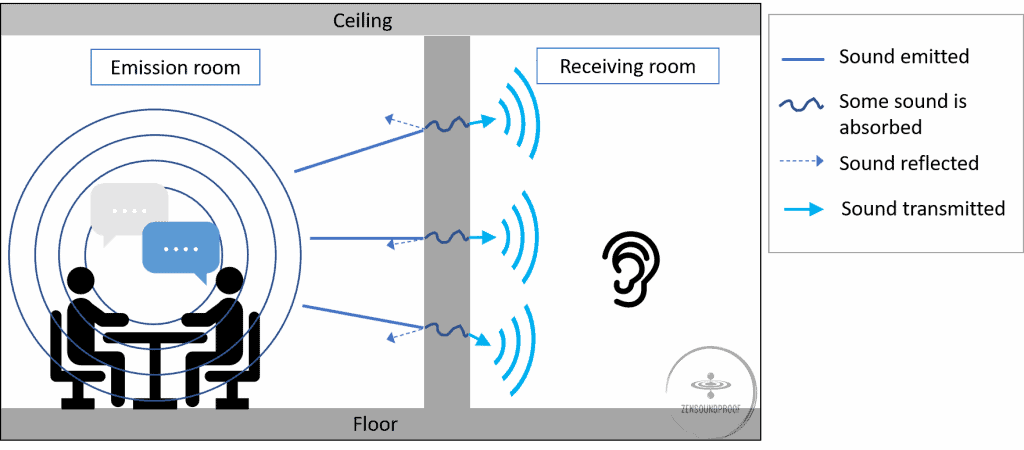
Impact Noise
Also known as structure-borne sounds, impact noises are created when an object makes contact with a solid surface. This creates vibrations, which pass through the surface and come out the other side as sound waves. They include:
- Footsteps
- Knocking on a door
- Furniture being moved
- A ball bouncing on a floor
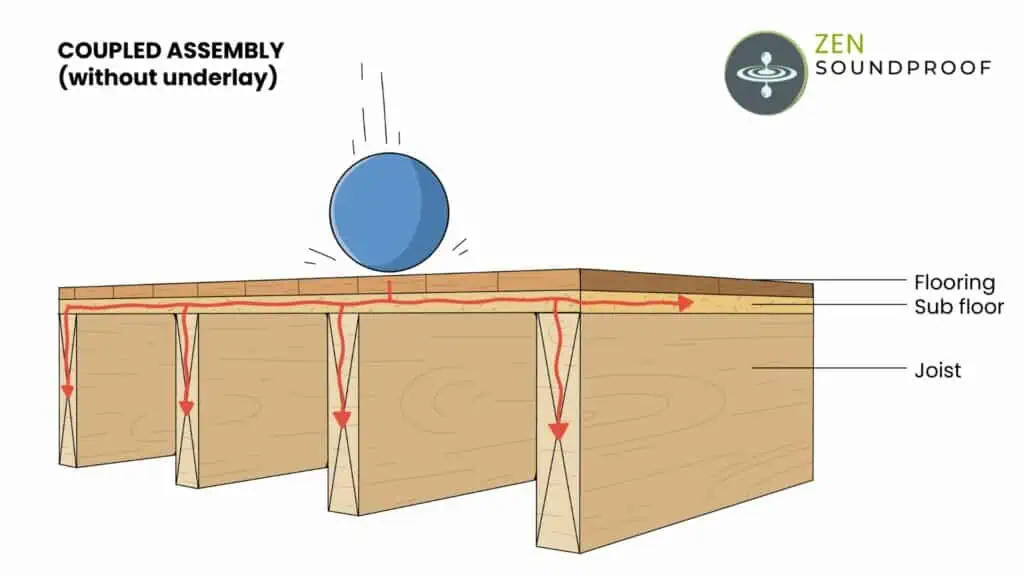
Dealing with Different Noise Types
Different types of sound require different methods to combat them. We work with the 4 principles of soundproofing, and using some combination of the 4 will lead to a more effective soundproofing project.
Generally, though, we combat noise pollution (both airborne and impact) by disrupting the transmission pathway. In short, this means making it harder for the sound wave to reach our ears.
We could do this by:
- Adding mass to a wall (makes it harder to vibrate)
- Decoupling (separates a structure to create a break in the pathway)
- Absorption (reduces the vibrational energy of airborne sound waves)
It’s worth noting, however, that absorption isn’t the same as soundproofing. We use it to improve sound quality in a space, which is slightly different. I recommend reading my article on soundproofing vs. sound absorption to understand more.
Types of French Doors
A much easier concept to understand is the types of French doors. Note, a French door is one with glass panes, whereas a “normal” double solid core door is usually made from solid materials like wood.
There are 3 types of French doors:
- Hinged French doors. Unsurprisingly, these are glass-paned double doors that swing open and shut. They could be both exterior and interior French doors.
- Sliding French doors. These are French doors that slide along a track, either across each other or along a wall. They’re basically the same as sliding glass doors, so check out my other article for some tips.
- Bifold French doors. Bifold doors are made of several panels that slide open and stack on each other in a concertina pattern. These are the most difficult to soundproof because of their opening and closing mechanism.
The type of French door you’re dealing with will dictate what soundproofing solutions you can apply, and how. For example, sliding and bifold doors won’t have as much capacity for adding mass, as it’d get in the way of the doors opening and closing. Make sure you’re aware of your door type before moving on to the solutions.
7 Tips for Soundproofing French Doors
My tips vary in cost and ease of application. I recommend reading through and deciding which ones you could combine for the best results.
1. Make Sure the Glass is Double-Glazed
I imagine most people reading this have double-glazed glass French doors. But if you don’t, switching them out to double-glazing will make a decent difference to noise transmission.
Double glazing consists of 2 panes of glass with an air gap in the middle. Primarily designed for thermal insulation, it also helps with noise transmission because air isn’t a good conductor of sound. Also, having different mediums causes sound waves to expend energy at different frequencies.
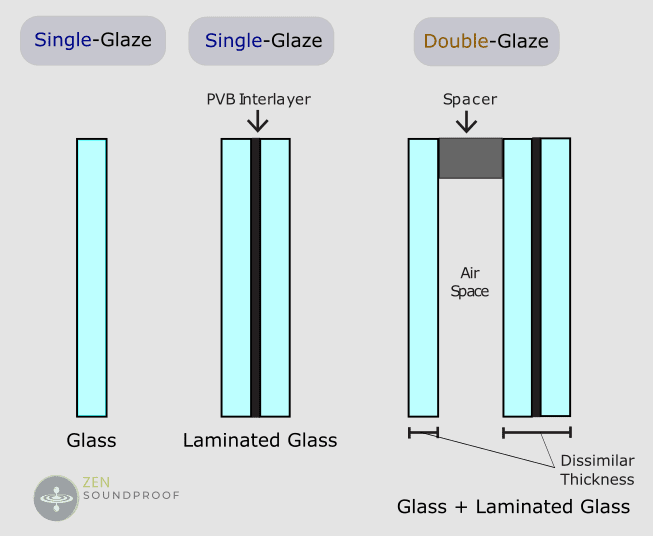
Laminated glass takes it a step further because it’s made from 2 panes with a resilient layer sandwiched in the middle. One of the main materials (PVB) is viscoelastic, a helpful characteristic for reducing sound transmission.
One study found that double glazing could reduce low-frequency sounds (100-500Hz) by as much as 37dB. Another study found that laminate glass could reduce high-frequency sounds (up to 2000Hz) by up to 50dB.
While not all double-glazed or laminate glass is created equal, swapping your existing glass doors out could make a big difference. However, a double-glazed French door won’t be compatible with your existing single-glazed door hardware, due to the extra space needed.
On the other hand, swapping tempered glass with laminated glass should not be a problem provided you find the same dimensions (typically it’s 20”x64”).
I found this excellent tutorial on how to replace a glass in a French door.
2. Fit an Acoustic Threshold
An acoustic threshold is a type of door sweep. As you probably know, this goes on the bottom of the door to plug the air gap, and to provide some thermal insulation.
It’s a good option to soundproof interior French doors but won’t be as useful on exterior doors. Exterior doors are usually tighter in their frames, and uPVC setups should have a bottom section to the frame.
I don’t think door sweeps do much on their own. There isn’t usually enough mass to block sounds, although softer materials will help absorb a small amount of unwanted noise. However, if your door has an obvious gap at the bottom, adding a sweep won’t do any harm.
The most effective products (a term I use lightly) are door gaskets, such as these by Norsound.
Standard draft stoppers will help, but you ideally want something rigid that seals the gap as tightly as possible.
3. Seal Gaps in Door Frame
When soundproofing French doors, it’s important to address the frame as well as the door. I find it’s a fairly easy job but one that shouldn’t be overlooked.
Regardless of your door type, the doors will be hung in a frame. Over time, it can shift, causing cracks or gaps between the frame and the wall. Although minor, these create pathways for sound waves, which follow the path of least resistance.
Luckily, sealing them is a breeze. I recommend using acoustic caulk such as Green Glue for this. Unlike silicone sealant, it never fully sets, giving it some elasticity. As such, it won’t crack if there’s further movement of the door seal, and it’ll remain effective at blocking sound waves.
I recommend watching this video on how to caulk the gap between a door frame and wall. The process is exactly the same with acoustic caulk.
4. Apply Weatherstripping
Weatherstripping does a similar job to caulk – it seals gaps. But this time, it’s between the frame and the door. Weatherstripping is foam tape, meaning it can compress as needed to create a tight seal.
You can use weatherstripping on interior and exterior French doors. You can also use it on any door type, although it might not do much for bifold doors.
There are different kinds of weatherstripping. For example, there’s flat tape for applying around the frame. Alternatively, you could use V-shaped weatherstripping. You apply this around the frame of a swing door, and the V compresses when the door closes to form a tighter gap.
Flat tape is better for irregular-sized gaps because it comes in varying thicknesses. V-shaped tape is best for swing doors.
5. Hang a Soundproof Curtain
Soundproof curtains are made with thicker materials (or more layers) than normal curtains. They can absorb sound waves and provide a small amount of sound blocking. However, they’re not thick enough to block a substantial amount of noise.
I have an article on the best soundproof curtains for doors, so check that out for some product recommendations.
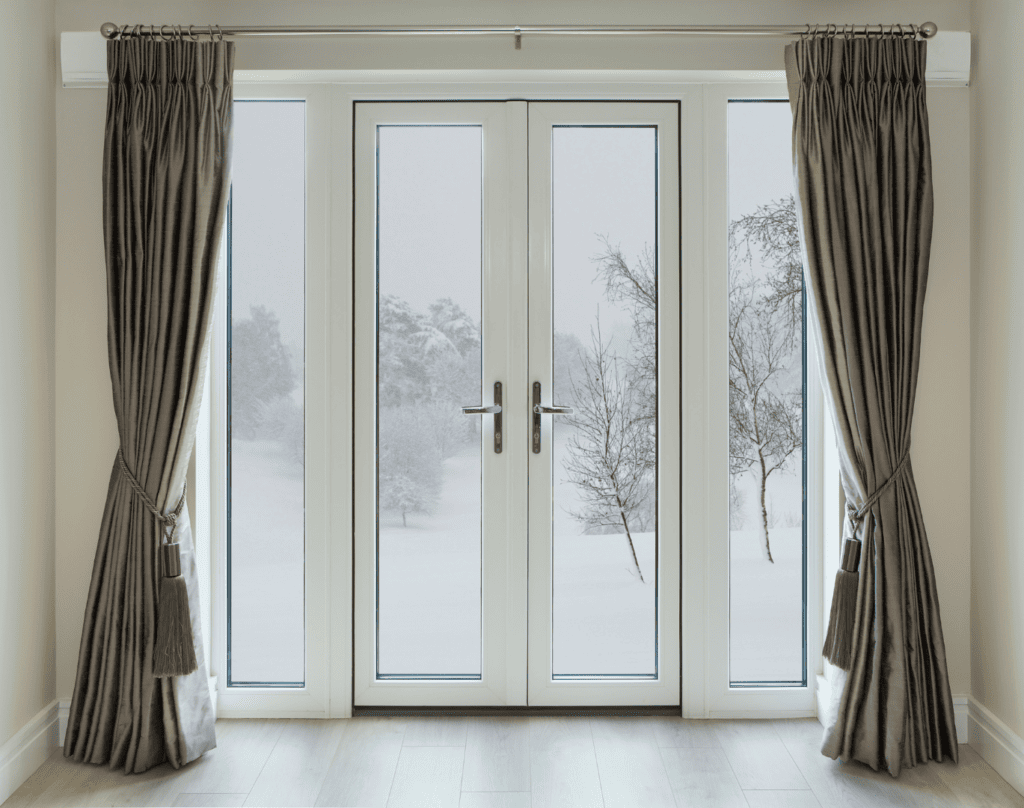
You’ll want to find the thickest, heaviest and densest curtains possible. Also, they’ll need to cover the entire door and extend over the wall slightly to ensure they’re effective.
A 2021 study found that soundproof curtains could reduce insertion loss by more than 10dB at 500-1600Hz frequencies (which is outside of speech range). In simple terms, this is a decent result. However, the study also confirmed that the curtains’ performance is highly dependent on the material type and thickness.
The bottom line is that soundproof curtains aren’t amazing at reducing sound transmission, but they can help with absorption. More importantly, hanging curtains in front of traditional French doors looks pretty normal. You can use them to reduce sound transmission slightly without messing up the room’s appearance.
6. Address the Air Vents Above Doors
A lot of French doors (both internal and external) will have small air vents built into the top of the frame. Properly known as trickle vents, their purpose is to provide permanent ventilation. Although necessary to stop damp, they act as a permanent sound pathway, too.
Unsurprisingly, this is an issue for airborne sounds, especially traffic and street noise coming through external vents. Your options for dealing with this will depend on the size of the vent and whether you need the ventilation it offers.
I have a full article on how to soundproof air vents, so check that out for a full list of suggestions. The only 2 options that could work here are:
- A sound maze
- Blocking the vent completely
Bear in mind that blocking the vent completely will also block ventilation. A compromise is a sound maze, as it essentially creates a pathway that causes sound waves to expend their energy. It can still let air through, though.
However, a sound maze takes up quite a bit of room and will look ugly above your French door. They’re fine for transfer grilles above interior doors as these are typically much thicker. A trickle vent above a French door is small and narrow in comparison.
I discuss sound mazes in more detail in the article linked above, but watch this video for steps on how to build a sound maze.
An alternative is to install acoustic trickle vents. As the name suggests, these are trickle vents with added insulation. Swapping out your existing trickle vent is usually possible, as this trickle vent replacement video shows.
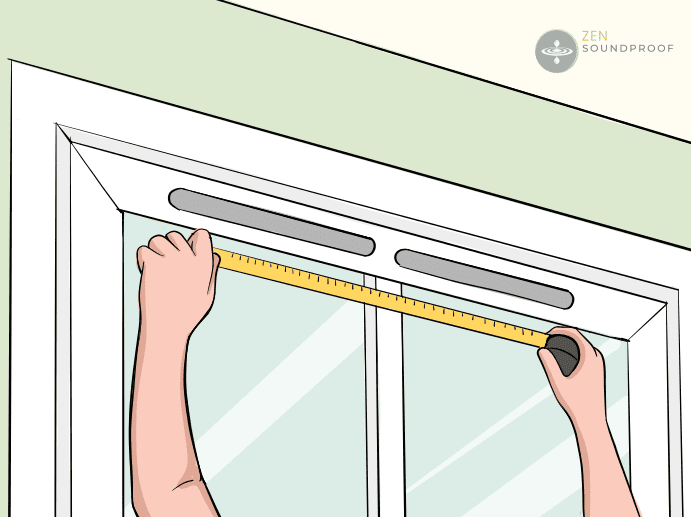
However, you might not be able to find a product suitable for a door, as most are designed for windows. Try to temporarily remove your trickle vent to measure the dimensions before you start shopping around.
7. Lubricating Hinges and Handles
So far, my solutions have addressed sound transmission through the door and frame. But another area we must address is the door itself and any noises it could make. Primarily, this’ll be the hinges and handle, which can become squeaky if not properly maintained.
Hinges and handles squeak due to friction from parts rubbing together as they move. This can be due to dirt or dust buildup, or due to a lack of lubrication. You might find this happens with rollers on sliding glass doors, too.
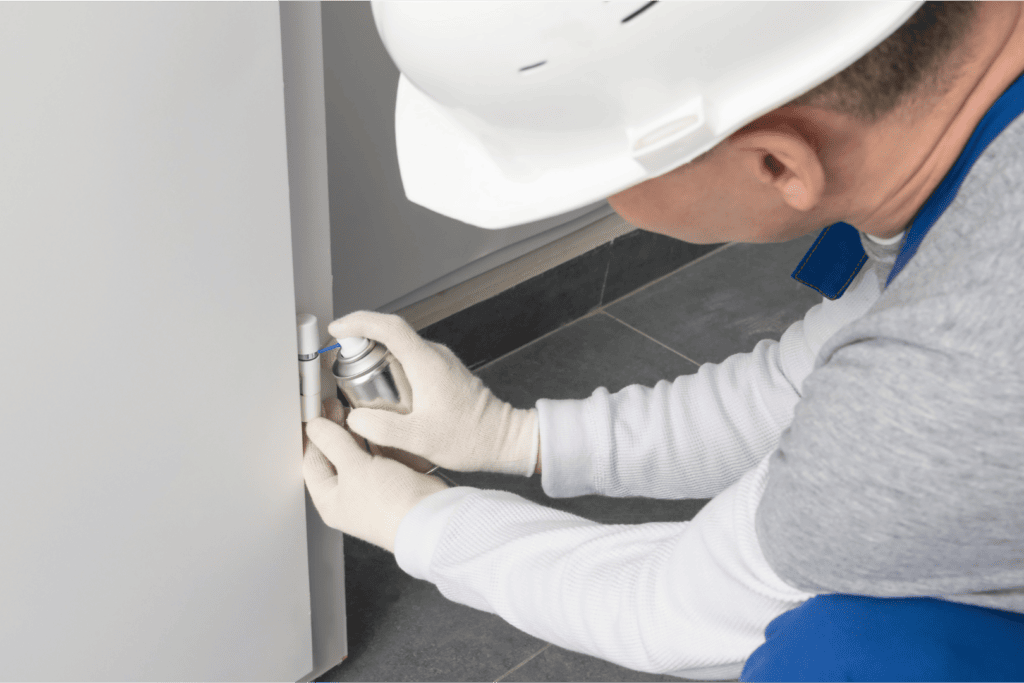
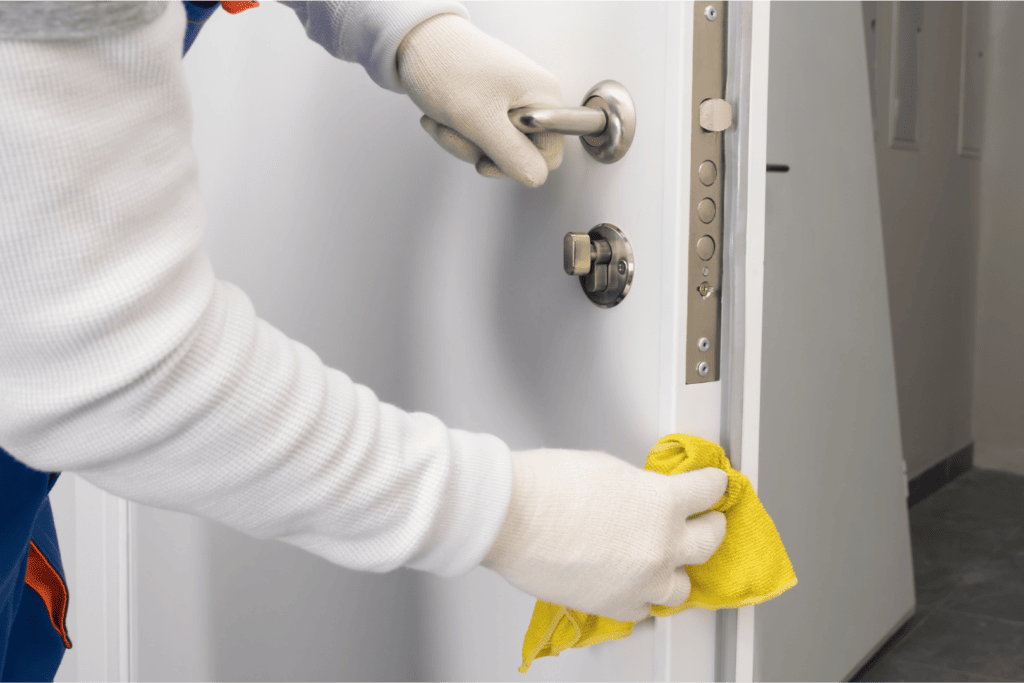
The first step is to clean the hinges, handle or rollers if you can. A sliding door’s bottom track (if it has one) will get dirty pretty easily. You can clean it using a vacuum cleaner before applying lubricant.
I recommend using silicone lubricant for moving parts on French doors. It’s better than petroleum-based lubricant because it won’t degrade metal or plastic parts.
Choose one that has a narrow applicator (such as the tube included with WD-40 cans) and spray it onto the hinges and into the door latch. After 5-10 minutes, you should find any squeaks have stopped. Reapply every month or two for best results.
Granted, squeaky hinges are fairly minor in the grand scheme of door soundproofing, but they’re worth addressing. After all, there’s little point in blocking vents or soundproofing glass if the door makes noise when you open it!
Final Thoughts
In some ways, soundproofing French doors is fairly limited in what you can do. Balancing sound blocking against retaining the door’s appearance and functionality is challenging. But, as you can see, there are a few options.
I recommend combining as many of the solutions as you can on your French doors. Doing so will address different sound pathways and noise types, ideally tackling the issue from several angles.
Do you have any other suggestions for soundproofing French doors? Drop them in the comments below.
